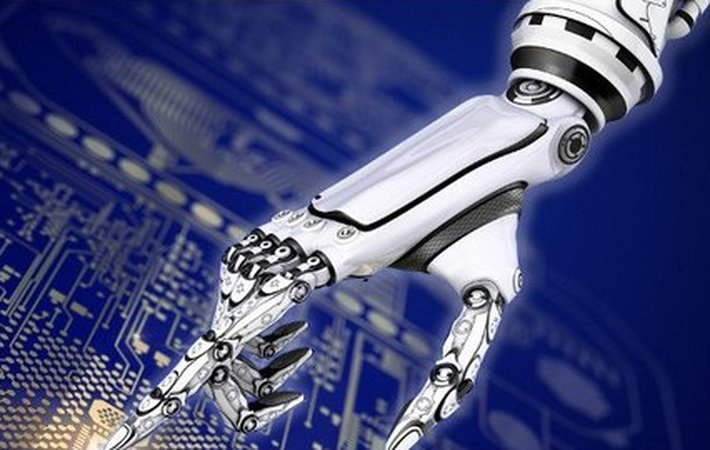
Published on 05/10/2017 | Use Cases
Businesses across the world are rapidly leveraging the Internet-of-Things (#IoT) to create new products and services that are opening up new business opportunities and creating new business models. The resulting transformation is ushering in a new era of how companies run their operations and engage with customers. However, tapping into the IoT is only part of the story.
For companies to realize the full potential of IoT enablement, they need to combine IoT with rapidly-advancing Artificial Intelligence (#AI) technologies, which enable ‘smart machines’ to simulate intelligent behavior and make well-informed decisions with little or no human intervention.
Artificial Intelligence (AI) and the Internet of Things (IoT) are terms that project futuristic, sci-fi, imagery; both have been identified as drivers of business disruption in 2017. But, what do these terms really mean and what is their relation? Let’s start by defining both terms first:
IoT is defined as a system of interrelated Physical Objects, Sensors, Actuators, Virtual Objects, People, Services, Platforms, and Networks that have separate identifiers and an ability to transfer data independently. Practical examples of #IoT application today include precision agriculture, remote patient monitoring, and driverless cars. Simply put, IoT is the network of “things” that collects and exchanges information from the environment.
IoT is sometimes referred to as the driver of the fourth Industrial Revolution (Industry 4.0) by industry insiders and has triggered technological changes that span a wide range of fields. Gartner forecasted there would be 20.8 billion connected things in use worldwide by 2020, but more recent predictions put the 2020 figure at over 50 billion devices. Various other reports have predicted huge growth in a variety of industries, such as estimating healthcare IoT to be worth $117 billion by 2020 and forecasting 250 million connected vehicles on the road by the same year. IoT developments bring exciting opportunities to make our personal lives easier as well as improving efficiency, productivity, and safety for many businesses.
AI, on the other hand, is the engine or the “brain” that will enable analytics and decision making from the data collected by IoT. In other words, IoT collects the data and AI processes this data in order to make sense of it. You can see these systems working together at a personal level in devices like fitness trackers and Google Home, Amazon’s Alexa, and Apple’s Siri.
With more connected devices comes more data that has the potential to provide amazing insights for businesses but presents a new challenge for how to analyze it all. Collecting this data benefits no one unless there is a way to understand it all. This is where AI comes in. Making sense of huge amounts of data is a perfect application for pure AI.
By applying the analytic capabilities of AI to data collected by IoT, companies can identify and understand patterns and make more informed decisions. This leads to a variety of benefits for both consumers and companies such as proactive intervention, intelligent automation, and highly personalized experiences. It also enables us to find ways for connected devices to work better together and make these systems easier to use.
This, in turn, leads to even higher adoption rates. That’s exactly why; we need to improve the speed and accuracy of data analysis with AI in order to see IoT live up to its promise. Collecting data is one thing, but sorting, analyzing, and making sense of that data is a completely different thing. That’s why it’s essential to develop faster and more accurate AIs in order to keep up with the sheer volume of data being collected as IoT starts to penetrate almost all aspects of our lives.
Examples of IoT data:
It’s simply impossible for humans to review and understand all of this data with traditional methods, even if they cut down the sample size, simply takes too much time. The big problem will be finding ways to analyze the deluge of performance data and information that all these devices create. Finding insights in terabytes of machine data is a real challenge, just ask a data scientist.
But in order for us to harvest the full benefits of IoT data, we need to improve:

AI and IoT Data Analytics
There are six types of IoT Data Analysis where AI can help:
AI in IoT Applications
These are just a few promising applications of Artificial Intelligence in IoT. The potential for highly individualized services are endless and will dramatically change the way people lives.

Challenges facing AI in IoT
Conclusion
While IoT is quite impressive, it really doesn’t amount to much without a good AI system. Both technologies need to reach the same level of development in order to function as perfectly as we believe they should and would. Scientists are trying to find ways to make more intelligent data analysis software and devices in order to make safe and effective IoT a reality. It may take some time before this happens because AI development is lagging behind IoT, but the possibility is, nevertheless, there.
Integrating AI into IoT networks is becoming a prerequisite for success in today’s IoT-based digital ecosystems. So businesses must move rapidly to identify how they’ll drive value from combining AI and IoT—or face playing catch-up in years to come.
The only way to keep up with this IoT-generated data and gain the hidden insights it holds is using AI as the catalyst of IoT.
The original article was featured on LinkedIn.